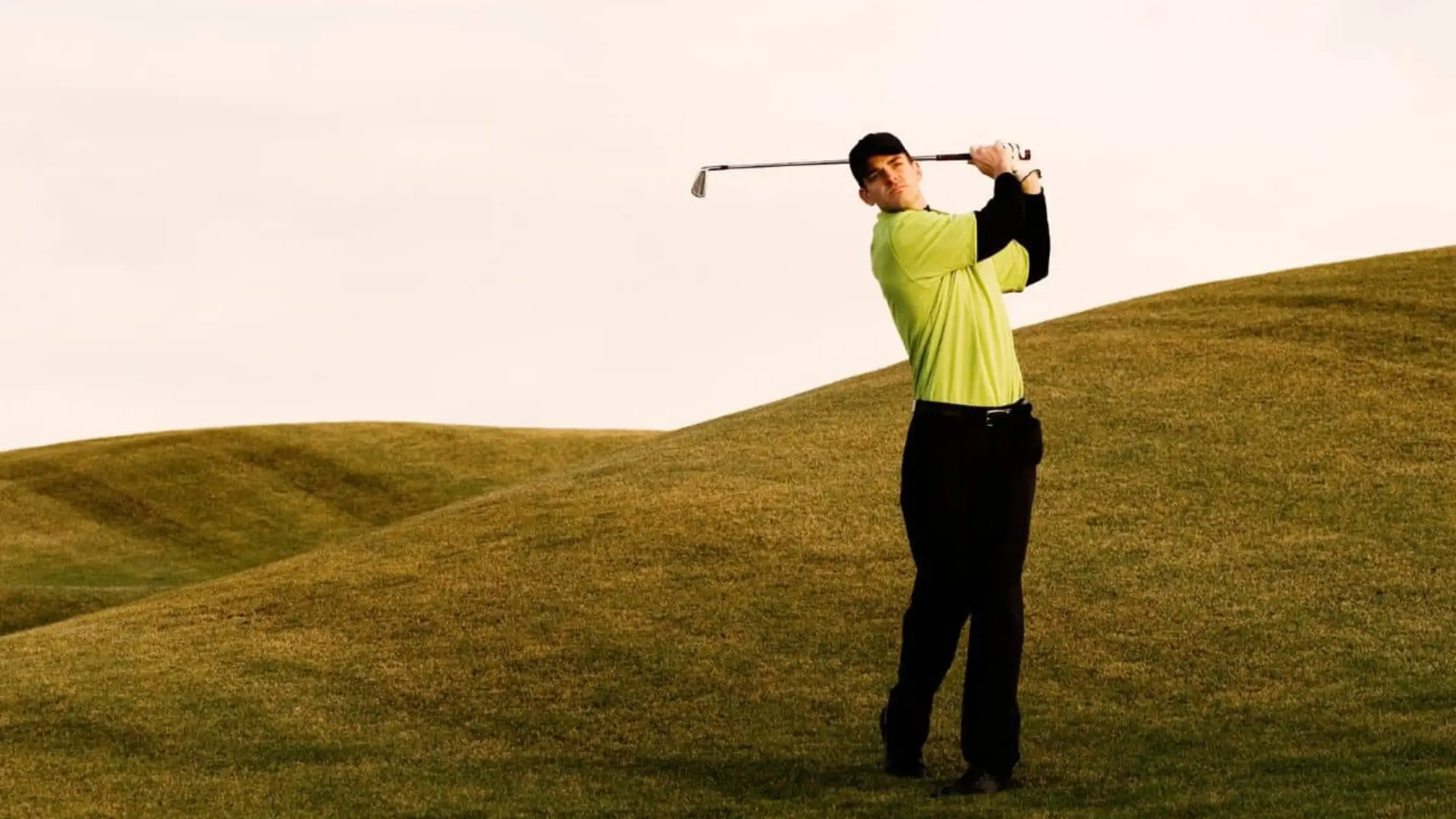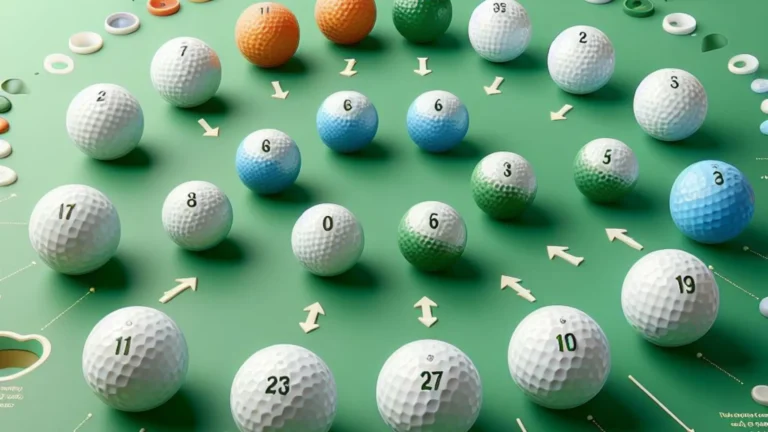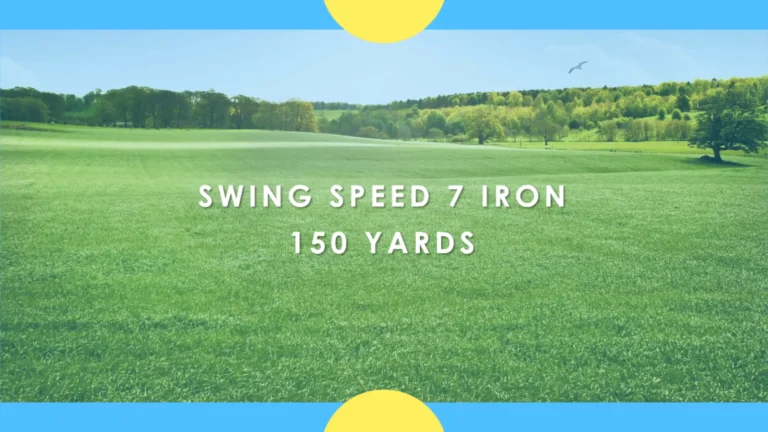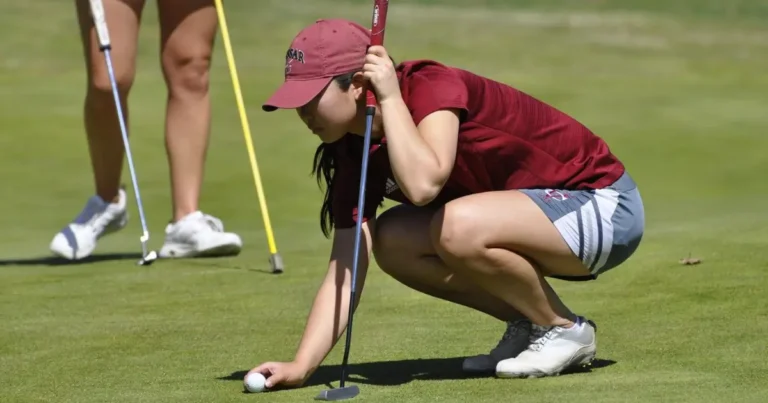How to Hit a Golf Ball With Backspin
Putting backspin to a golf ball can give you more control, distance, and accuracy on your drives and approach shots. Being able to properly hit shots that check up on the green rather than rolling out can be a huge advantage for beginner golfers. Making solid contact with the ball, using the appropriate club for the distance, and following through properly after impact are all necessary for producing your own backspin. In this article, I’ll explain how to hit golf shots that spin backwards when they land on the green. With a few tweaks to your setup and swing technique, you can hit crisp iron and wedge shots that stick rather than roll off target.
What is backspin?
Backspin on a golf shot refers to the ball’s backward rotation after it has been struck. The loft and angle of the club face impart this topspin-like effect on the ball when golfers hit irons and wedges correctly. Friction causes the ball to gyrate in the opposite direction as the clubhead as it compresses at impact. This strikes the bottom half of the ball while the clubhead continues downward, producing backspin from the top half.
Backspin occurs when the top of the golf ball rotates in the opposite direction of its flight path. Backspin causes the ball to generate lift, settle softly on the green rather than rolling out, and occasionally curving or moving side to side in flight. Learning to hit shots with proper backspin gives golfers much more control over trajectory and distance.
What are the benefits of backspin?
Backspin on golf shots is extremely popular for a variety of reasons. For starters, backspin creates lift beneath the ball, allowing it to travel further through the air. Backspin shots will tend to launch higher and descend more gradually. Because golf balls land at a more vertical angle, they hold greens better. Backspin also causes balls to come to a halt quickly after landing instead of rolling forward significantly.
Golfers can thus hit their approach shots past the hole on purpose, allowing the backspin to pull the ball backwards as it settles on the green. When hitting into greens, proper backspin makes judging distances much easier. Finally, backspin provides more lateral stability in flight because crosswinds have less of an impact on a spinning ball. Mastering backspin allows advanced players to control their ball flight with far more precision than simply making clean contact without spin.
How to get backspin on a golf bal
Backspin is created by using lofted irons and wedges that are designed to get under the ball, sharp grooves to impart friction, and an angle of attack that sweeps downward rather than scooping at impact. Set up to the ball with your stance slightly open towards the target to allow your clubface to rotate open naturally. As you begin your downswing, concentrate on shifting your weight to your lead side while keeping your head over the ball.
Sweep the clubhead down and underneath the ball sharply just before impact, accelerating through contact. As you follow-through, allow your wrists to fully release and extend towards the target. When executed correctly, the downward strike will compress the back half of the ball against the face, using grooves and loft to add topspin to your shot. Visualize the “V’s” of backspin in flight and compare how well balls land and settle compared to shots hit solely with topspin.
Your swing
An ideal golf swing relies on successful weight transfer, clubhead lag through impact, and a downward angle of attack into the ball to consistently produce backspin shots. As the swing reaches the top, begin shifting pressure to the lead side while maintaining wrist flex and lag to avoid casting too soon. The sequence should be timed so that the chest rotates open in sync with the arms, releasing the clubhead sharply through impact in a sweeping motion, slightly delofting the iron or wedge.
.
Over spin is generated by a downward strike, clubface rotation, and grooves brushing underneath power through the back half of the ball. Continue with a balanced extension, paying attention to the arc around which the club releases post-impact. Solid tempo, sequenced firing of the body, and sound mechanics that progress from backswing to follow-through will consistently produce the compressions required for backspin. Master this kinetic chain to achieve consistent trajectories, distance control, and expert command of landing angles when approaching greens.
Glenmuir golf
Glenmuir is a Scottish history brand that has been producing premium golf apparel and equipment since 1891. While quality equipment such as groove-sharpened wedges and urethane multi-layer balls aid in backspin, proper technique is essential. Glenmuir’s innovative outerwear features moisture-wicking, stretch fabrics that allow complete freedom of movement, which is essential for compressing shots. Their motorflex and oats collections make use of anatomic paneling designed specifically for game improvement through unrestricted movement.
To help golfers shallow out their attacks, instructors at Glenmuir’s on-site golf academy use video analysis and tour-caliber launch monitors. Students receive tangible feedback that confirms the downward dynamic loft and ball pressures that promote spin through impact. Golfers can unlock consistent backspin and improve their short game by using Glenmuir’s cutting-edge apparel and instruction.
FAQs
What clubs should I use to hit backspin shots?
Higher lofted short irons and wedges, generally pitching wedge through lob wedge, are the best clubs for creating backspin. Because these clubs have more loft, it is easier to strike the ball at a steep angle.
What changes should I make to my setup for backspin shots?
In your stance, aim to position the ball forward of center, open your front foot to point outwards, and lean the shaft forward. This orientation moves the low point of your swing arc forward, allowing you to strike down sharply.
Why is consistent and solid contact so important for backspin?
Pure contact, with no mishits, is required for your clubface grooves to fully grip the ball and transfer overspin. To minimize chunks, brush the turf shallowly after impact.
How can I tell if my shot generated backspin?
Backspin shots that are properly executed will leave a very tight, almost immediate ball mark rather than skidding forward on the green. If you make flush contact, you’ll also notice the underside of the ball spinning backwards in flight.
Are there any common swing flaws that prevent most amateur golfers from producing backspin?
Scooping or picking the ball by striking it too steeply upwards is a very common mistake that results in thin shots. Shift your weight to the left, shallow your swing plane, and sweep down through impact.
Final thoughts
Golf shots that spin backwards upon landing are an important technique for scoring well around the greens. While proper equipment aids in backspin, it is most important to dial in an efficient swing motion for consistent results. Remember to shallow out your downswing to sweep the clubhead downward at an ideal angle through impact. To compress the back of the ball, shift your weight to your left side, keep your wrists hinged, and accelerate smoothly. Allow the rotation of your body to naturally square the face for solid contact. You’ll notice significant improvements in spin and precision once you’ve ingrained this sequenced motion for flush strikes with your wedges. Spend time on the practice green practicing a pendulum-like tempo with clean rotations. Mastering backspin will directly lead to lower scores as a golfer due to improved short game control.







